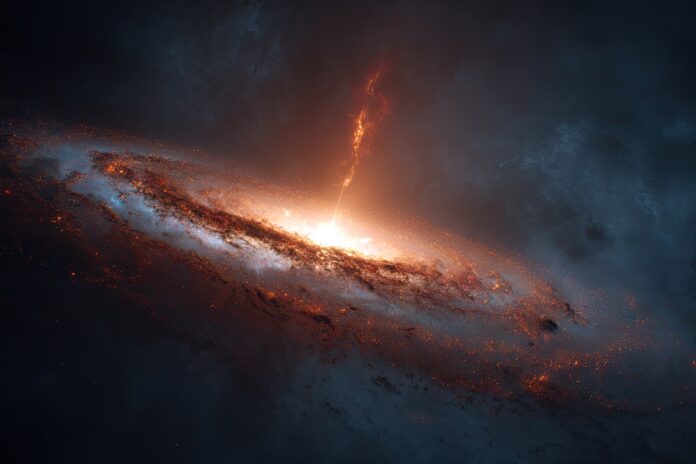Extreme Nuclear Transients: Redefining Cosmic Explosions
Extreme Nuclear Transients – the focus keyphrase for this post – have shaken the foundations of astrophysics. These explosive events are, according to astronomers, the most powerful cosmic explosions observed since the Big Bang. Their incredible scale and energy output surpass everything previously recorded in the cosmos, marking a pivotal moment in space science [5].
What Are Extreme Nuclear Transients?
For decades, astronomers have studied energetic phenomena like supernovae and tidal disruption events (TDEs) – the latter occur when a star is torn apart by a black hole’s gravity, generating intense flares. But nothing prepared scientists for the discovery of Extreme Nuclear Transients (ENTs). Most importantly, these ENTs shine far brighter and last much longer than anything previously observed. According to new research, ENTs can remain luminous for years and outshine their entire host galaxies, releasing as much as 25 times more energy than the most powerful supernova ever witnessed [4][2].
How Were ENTs Discovered?
The discovery came from an extensive search through data provided by the European Space Agency’s Gaia observatory, as well as ground- and space-based telescopes worldwide. In 2016, 2018, and 2020, the research team, led by the University of Hawaiʻi’s Institute for Astronomy, detected several unusual, long-lived flares that did not match any known cosmic event. After rigorous analysis, these flares were classified as Extreme Nuclear Transients [2].
One standout event, labeled Gaia18cdj, released energy on a scale never before seen – easily surpassing the combined light of every star in its galaxy. Therefore, ENTs became recognized as a new class of cosmic phenomena, reshaping our understanding of the universe’s most explosive processes [3].
Why Are ENTs So Astronomically Significant?
Besides that, ENTs are not just brighter – they are fundamentally different from tidal disruption events and supernovae. Traditional supernovae, while dramatic, fade relatively quickly. TDEs, although energetic, barely approach the dazzling brightness or longevity of ENTs. ENTs remain luminous over years, suggesting a mechanism that releases and sustains energy on a much greater scale [1].
This means that ENTs could change how we understand black holes, galactic centers, and even the formation of elements in the universe. The sheer scale of these explosions raises new questions about the life cycle of stars and the power of galactic nuclei.
The Mysteries That Remain
Because Extreme Nuclear Transients are so new, astronomers are still investigating their exact origins. Theories range from exotic black hole processes to previously unknown nuclear reactions at galactic centers. Ongoing observations and new tools – like next-generation space telescopes – will be critical in unraveling these mysteries.
Looking Ahead: The Future of Cosmic Discovery
With ENTs now in the scientific spotlight, astronomers will refine search techniques and develop models to explain their origins. Each discovery brings us closer to understanding the universe’s most energetic and enigmatic phenomena. As research continues, expect dramatic updates on these cosmic giants – and perhaps even more powerful explosions waiting to be discovered.
References
- EarthSky: Largest explosions in the universe since the Big Bang
- IFLScience: Gaia18cdj – The Biggest Explosion Event Since The Big Bang
- University of Hawaiʻi: Biggest explosion since the Big Bang
- Bioengineer: Hawaiʻi Astronomers Discover Most Energetic Explosions



